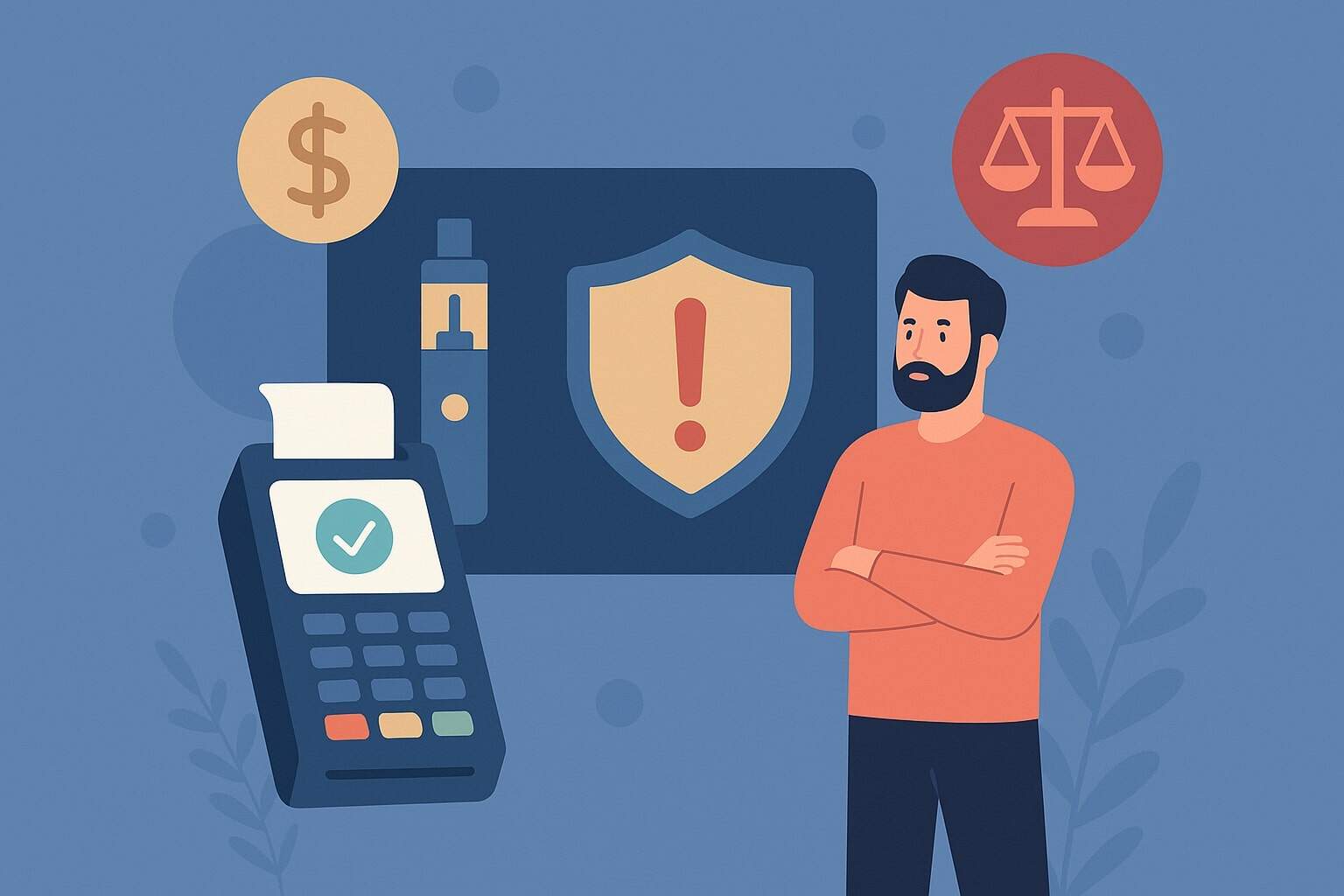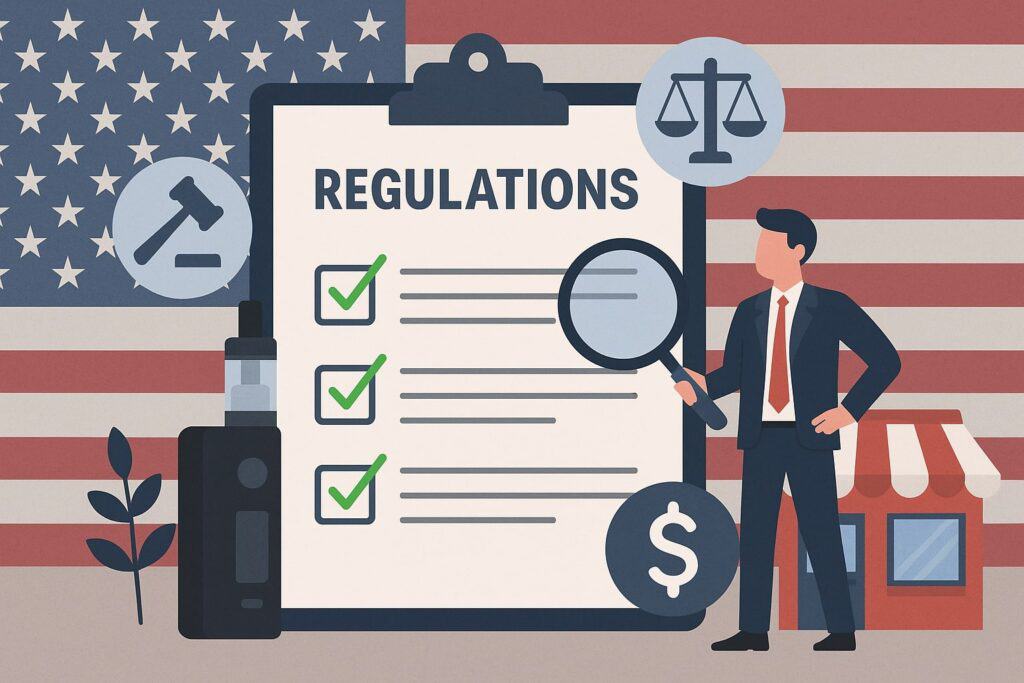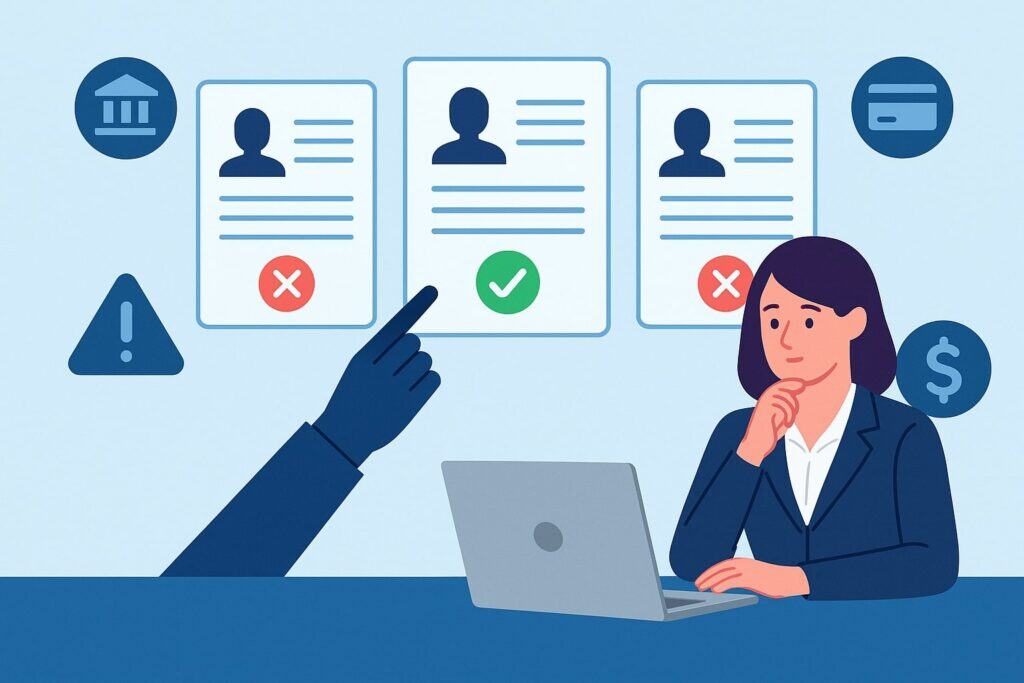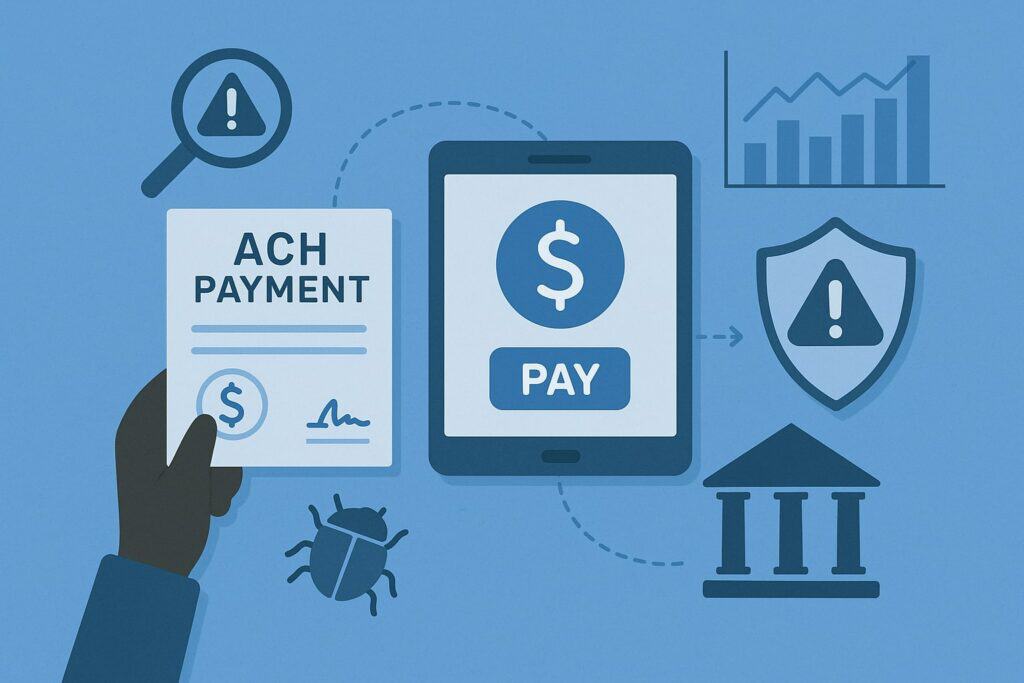
By vapeshoppointofsale September 15, 2025
High-risk merchant accounts are specialized payment processing solutions for businesses with elevated fraud or chargeback risks. Processors assign this status based on factors like industry regulations, credit history, and sales patterns. High-risk accounts typically involve higher fees, stricter terms (e.g. reserves or rolling deposits), and more intensive underwriting.
For example, retailers in sectors prone to disputes or evolving laws – such as tobacco, vaping, gambling or subscription services – are often classified as high-risk. The card networks even have special Merchant Category Codes (MCCs) for these industries: “MCC 5993: Tobacco, cigarettes, cigar stores, vape e-cigs, e-cigarettes”.
Because of this, many standard banks and processors refuse to serve vape and e-cigarette shops, forcing those merchants to seek out high-risk account providers.
Why Vape Shops Are High-Risk
Vape shops are deemed high-risk for several reasons. First, the products and regulations themselves carry legal complexity. The federal Tobacco 21 law makes it illegal to sell any tobacco product – including e-cigarettes and nicotine liquids – to anyone under 21.
In practice this means vape retailers must strictly verify age (many stores check IDs of anyone appearing under 27) and comply with FDA rules on labeling and sales restrictions. These evolving rules – like health warnings on ENDS (Electronic Nicotine Delivery System) packaging and bans on free samples – raise compliance risk for processors.
For example, the FDA guidance on vaping sales explicitly requires no free samples, age verification of buyers, and adult delivery signature for mail orders.
Moreover, vaping lies in a “gray area” of public policy and public health, attracting heightened scrutiny. The industry faces ongoing debates about health impacts and youth use, so banks view vape shops as reputational risks.
Many smoke shops now also sell novel products (CBD oil, delta-8 THC, kratom) which are tightly regulated or legally ambiguous. These factors – regulatory complexity, age-restrictions, and social controversy – combine to drive higher chargeback rates and fraud potential.
Processors know this history: in practice, vape/tobacco retailers are classified as high-risk (MCC 5993) by Visa/Mastercard guidelines. As a result, even if a vape business is legitimate, it often must sign up with a high-risk processor that specializes in regulated goods.
U.S. Regulations for Vape Merchants

U.S. federal law imposes strict rules on vaping products. The 2019 Tobacco 21 amendment to the Federal Food, Drug, and Cosmetic Act raised the minimum sales age for all nicotine products (including e-cigarettes and e-liquids) from 18 to 21 nationwide.
Thus, vape shop owners cannot legally sell to anyone under age 21. The FDA also requires clear warning labels on all e-liquid products and advertising, and limits on advertising methods.
Retailers must follow the FDA’s “This Is Our Watch” campaign rules – for example, checking IDs of buyers who look under 27, avoiding free samples, and banning sales via unattended vending machines. Failure to comply can lead to enforcement actions.
On the payment processing side, card networks have special rules for tobacco/vape merchants. Both Visa and Mastercard require any tobacco or vaping business to enroll in a high-risk registration program, which involves extra vetting and fees.
In practice, processors pay $500 per brand per year to maintain this registration, costs which are passed to the merchant. Additionally, for online vape sales, networks mandate an adult-signature requirement on delivery to ensure legal compliance.
In short, U.S. laws and card-brand policies make vape retailers inherently higher-risk from a compliance standpoint. Vape shop owners must understand these regulations – not only to operate legally, but also to maintain their merchant accounts.
Choosing a High-Risk Merchant Account Provider

Vape shop owners should seek payment providers experienced with tobacco and vaping businesses. Specialized high-risk processors understand the regulatory landscape and tailor underwriting accordingly.
When evaluating providers, look for features like dedicated underwriting, transparent fee structures, and fraud tools. Key considerations include:
- High-Risk Expertise: Ensure the processor explicitly supports vape/tobacco or analogous categories. For example, SeamlessChex and PaymentCloud are known high-risk specialists.
- Regulatory Compliance: The processor should manage VISA/MC registration and help you stay compliant (adult signature capture, ID verification support).
- Fraud/Chargeback Management: Advanced fraud screening and chargeback support (alerts, representation) are crucial. Many high-risk providers offer built-in tools for this.
For instance, SeamlessChex advertises “advanced chargeback management” and “top-of-the-line fraud protection” for high-risk merchants. PaymentCloud likewise includes integrated fraud and chargeback protection in its high-risk accounts. - Pricing and Contracts: High-risk accounts often carry higher processing fees and reserves. Compare pricing, but also watch for onerous terms (long lock-in contracts, high chargeback fees).
- Support and Security: Dedicated account managers and fraud support teams can be valuable. You’ll want a partner that can help when issues (like sudden freezes) arise.
Vape shop owners may also consider well-regarded high-risk platforms beyond traditional merchant accounts. For example, some online retailers use ACH payment (electronic checks) or escrow-like services to avoid card restrictions.
However, any alternative comes with its own compliance checks. In practice, many vape merchants succeed by combining credit/debit card processing (via high-risk providers) with strong fraud controls.
ACH Payments and Fraud Risks

Given credit-card challenges, some high-risk merchants use ACH (Automated Clearing House) payments for sales or subscriptions. ACH is a U.S. electronic network that moves funds directly between bank accounts (used for e-checks, direct debits, payroll, etc.).
For vape retailers, ACH can lower fees and bypass card-brand issues. But ACH carries its own risks: fraudulent debits and transfers can lead to losses and costly disputes.
ACH Fraud Examples: Criminals can exploit ACH in several ways. One common scheme is unauthorized debits: a fraudster steals bank login info or routing/account numbers (via phishing or data breach) and initiates debits to their own account.
Another is account takeover, where cyber-thieves hijack a merchant’s or customer’s online banking platform and push ACH payments. Other tactics include invoice fraud (sending fake payment requests), and ACH kiting (rapid transfer between accounts to create false balances).
Business Email Compromise (BEC) scams also often use ACH: scammers impersonate vendors or executives to trick finance teams into wiring funds or authorizing debits.
These threats are significant. Industry surveys show about one-third of businesses experienced ACH debit fraud in 2024, and ACH transactions were the single most targeted payment method in BEC attacks.
Any merchant accepting ACH needs to defend against these schemes. For vape shops, which may rely on ACH for recurring orders or payments to suppliers, it’s vital to implement robust fraud prevention.
ACH Fraud Prevention Strategies
Protecting against ACH fraud involves a combination of technology, procedures, and vigilance. Key best practices include:
- Multi-Factor Authentication (MFA): Require MFA for any user accessing bank accounts or payment portals. This greatly reduces the risk of account takeover via stolen passwords.
- Transaction Monitoring and Alerts: Use software or banking tools that analyze ACH transactions in real time. Machine learning and rule-based monitoring can flag unusual patterns (e.g. sudden large debits, off-hours transfers, or new beneficiary accounts).
The NACHA risk management rules also emphasize continuous monitoring; beginning in 2026, all businesses will be required to implement risk-based ACH monitoring processes. - Pre-Authorization Controls: Wherever possible, whitelist approved payees and amounts. For example, “pre-authorized ACH” systems let you confirm legitimate recipients via tiny micro-deposits. Any deviation (unknown account or different amount) can trigger a manual review before the debit processes.
- Vendor and Payee Verification: Always verify any request for payment changes through a secondary channel.
For instance, call a known contact to confirm if payment instructions were altered in an emailed invoice. “Secondary sign-off” procedures (requiring another employee or department to approve changes) help block BEC-style fraud. - Staff Training and Internal Controls: Educate employees about phishing and social engineering. Train finance staff to scrutinize any unexpected payment requests or invoice changes.
Implement segregation of duties so that no single person can initiate and approve transactions alone. Regular audits and reconciliations also catch unauthorized ACH entries quickly. - Data Security: Encrypt banking credentials and restrict access. Store sensitive information (like bank account data) securely and change passwords regularly. Secure your email and network to prevent credential theft.
- Fraud Detection Services: Consider partnering with specialized fraud prevention providers or banking fraud departments.
Tools like ACH filters/blocks (which only allow debits from pre-specified sources) and third-party fraud platforms can add layers of protection. Many processors and banks now offer analytics services (e.g. anomaly detection dashboards) to help identify suspicious ACH activity. - Know the Law: Educate yourself about legal protections. In the U.S., laws such as the Electronic Fund Transfer Act (EFTA) limit consumer liability for unauthorized transfers, but businesses often have greater liability.
Responding quickly to unauthorized ACH notices is essential. Under EFTA, a timely report (within 60 days of a statement) can shift liability away from the victim. Having documented fraud controls can also help in any liability dispute.
By layering these controls – strong authentication, vigilant processes, and sophisticated monitoring – a vape shop can significantly reduce ACH fraud risk. The cost of fraud (funds lost and the chargeback/dispute fees) often far exceeds the investment in prevention.
Comparing Fraud Protection Services
Specialized fraud tools and platforms can bolster a merchant’s defenses. The table below compares some representative processors and their built-in fraud/chargeback features. (All high-risk providers; see sources for details.)
| Provider | High-Risk Focus | Fraud/Chargeback Protection |
|---|---|---|
| SeamlessChex | Yes (high-risk specialist) | Advanced transaction monitoring (99.1% acceptance), dedicated chargeback management, PCI-level security. |
| PaymentCloud | Yes (high-risk specialist) | Integrated fraud screening and chargeback tools; surcharge model for passing fees. |
| SoarPay | Yes (specialist, limited scope) | Supports common high-risk industries; standard fraud filters and alerts. |
| Stripe (Radar) | No (general e-commerce) | ML-based fraud scoring on ACH and card transactions; customizable risk rules. |
| Authorize.net | No (general, supports some high-risk) | Add-on service: Advanced Fraud Detection Suite with customizable rules. |
Each high-risk processor has different strengths. For example, SeamlessChex emphasizes comprehensive high-risk underwriting and advanced fraud technology. PaymentCloud likewise packages fraud prevention and chargeback support as standard for its clients.
General platforms like Stripe offer robust machine-learning fraud tools (Radar) but are not tailored to vape/tobacco specifically. When choosing a service, compare features like AI monitoring, invoice checking, and dedicated support.
Regardless of provider, it’s wise to use additional protection services. For instance, merchant-level solutions (Verifi, Ethoca) can detect and contest disputes quickly, while banking tools (ACH blocks, legal ACH stop payments) guard accounts.
Table tools above give a snapshot, but merchants should ask potential providers about all fraud controls and chargeback policies in writing.
FAQs
Q: What makes a vape shop a “high-risk” merchant?
A: Vape shops sell regulated nicotine products to adults, which triggers extra scrutiny. Age restrictions, FDA oversight, and a history of chargebacks mean payment networks classify them as high-risk.
For example, Visa/Mastercard label vape/tobacco businesses under a high-risk MCC (5993). This status leads to higher fees and more rigorous underwriting.
Q: Can a vape shop accept ACH or e-check payments?
A: Yes. ACH is a common alternative to credit cards. It has lower fees and broad acceptance. However, ACH payments still carry fraud risk. We recommend the same precautions (verified accounts, transaction monitoring, MFA) that banks advise for any ACH user.
As noted above, nearly 34% of businesses saw ACH debit fraud in 2024, so strong controls are a must if you use ACH.
Q: What should I look for in a high-risk payment processor?
A: Look for processors with proven experience handling vape, tobacco, or similar high-risk industries. Key features include transparent pricing, reserve options (or waiver), chargeback mitigation services, and robust fraud tools.
Providers like SeamlessChex and PaymentCloud explicitly service vape businesses. Always verify they handle Visa/MC registration and can enforce any ID or signature requirements.
Q: How can I prevent ACH payment fraud at my store?
A: Implement multiple safeguards. Use multi-factor login for bank accounts, set up transaction alerts, and only allow debits from known vendors.
Train staff to spot phishing and verify any unusual payment requests. Regularly reconcile your accounts to catch unauthorized entries. Finally, consider fraud screening services or bank filters to flag suspicious ACH activity.
Q: Are there legal protections if ACH fraud occurs?
A: Under U.S. law (Electronic Fund Transfer Act), consumers have strong protections against unauthorized transfers. For businesses, the rules are tighter – if you signed an authorization, liability can fall on you.
The key is acting quickly: disputing a fraudulent ACH within your bank’s stated timeframe (usually 60 days) gives you the best chance of recovery. Maintaining documented security procedures and compliance with industry rules can help if you ever need to argue liability or recover funds.
Conclusion
Vape shop owners operate in a high-risk payment environment due to stringent regulations and fraud exposure. Understanding this landscape – from federal Tobacco 21 law to card-brand rules – is key to obtaining and maintaining a reliable merchant account.
Choosing the right high-risk processor (one experienced with vaping/tobacco) and implementing strong fraud prevention measures are equally crucial. On the ACH side, retailers must be vigilant: ACH fraud is on the rise and can be devastating if unchecked.
By using tools such as micro-deposit verifications, real-time monitoring, and staff training, vape merchants can protect their revenue streams.
Ultimately, success comes down to partnering with knowledgeable providers and staying compliant. High-risk merchant accounts may cost more upfront, but they ensure your vape business can take payments securely.
Coupled with proactive ACH fraud controls and adherence to U.S. regulations, these steps will help vape shop owners grow their business without unexpected payment interruptions.